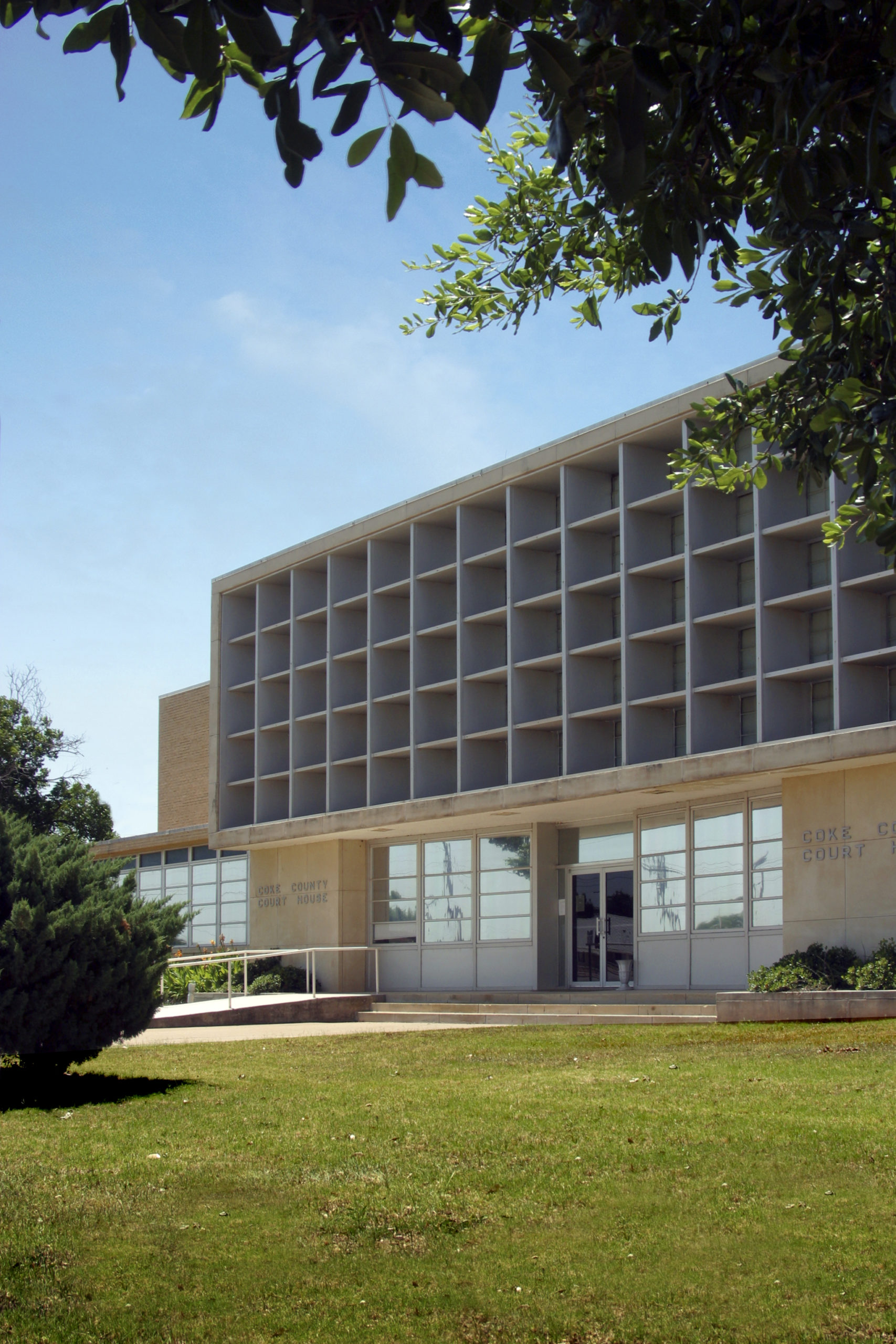County Seat: Robert Lee * Population: 3,320 (2010 Census)
The Coke County Courthouse was completed in 1956 in a Modern style as designed by Wyatt C. Hedrick and Harry Weaver.
Coke County was created from Tom Green County and named for Gov. Richard Coke. The county was organized in 1889 with Hayrick, located near Hayrick Mountain, as the first county seat. An election was conducted in January 1891, at which time the county seat was relocated to Robert Lee. The city, named after Confederate Gen. Robert E. Lee, became the capital due to its location on the north bank of the Colorado River near the heart of the county.
Robert Lee has been home to two courthouses; the first was raised in 1891 and fashioned from stone quarried by hand on the Kirkland Ranch. This inaugural county capitol cost some $20,700 and was the county home for 65 years.
The current temple of justice was built for $300,000 by the Suggs Construction Company.
Historical markers posted throughout the county offer a glimpse into the area’s rich history. For example, the Butterfield Overland Mail, technically known as the Overland Mail Company, was a stagecoach service that operated from 1858 to 1861. As explained on the marker, the stagecoach “passed near this site, providing for the first-time combined passenger and mail service between the Pacific and Atlantic Coasts. Operating west from St. Louis and Memphis, John Butterfield’s company used 1,350 horses and mules and 90 Concord coaches and wagons.” The stagecoach was known to travel at a run, in spite of rough roads. The trip took 25 days one way, with seven spent crossing Texas. The one-way fare for the 2,700 miles was $200.
Another marker describes the Coke County Jail, built in 1907 by the Southern Structural Steel Company of San Antonio. At least seven early sheriffs lived downstairs and acted as jailers. The prisoners averaged about four a month and were jailed only for short terms for minor law violations. The gallows on the second floor were never used. The facility now houses the Coke County Museum.
Sun Oil Company’s well – No. 1 Allen Jameson – was staked in September 1946 in Coke County and struck oil on Nov. 17 of that year. Intermittent drilling had gone on in Coke County for 30 years, but this discovery began a countywide oil boom.
For centuries rock ledges in the area gave protection to Lipan, Kickapoo, Comanche, and Kiowa Indians, as explained on a marker titled Indian Rock Shelters. In one typical shelter archeologists found evidence of three periods of occupation, plus numerous intricate petroglyphs, or rock carvings. River shells, turkey and deer bones, flint knives, scrapers, and points lay about the area.
One of the largest markers in the area honors those who served; the Bronte Veterans Memorial reads as follows: “Dedicated to the veterans of all wars who freely and courageously joined in the great worldwide conflicts for the preservation of peace, freedom, and democracy.”










